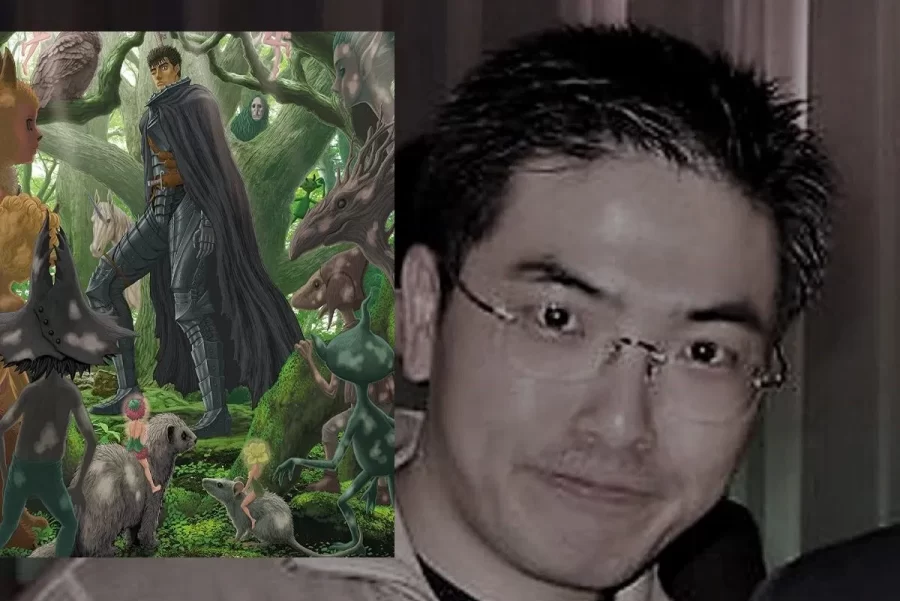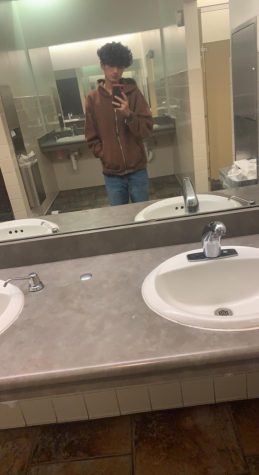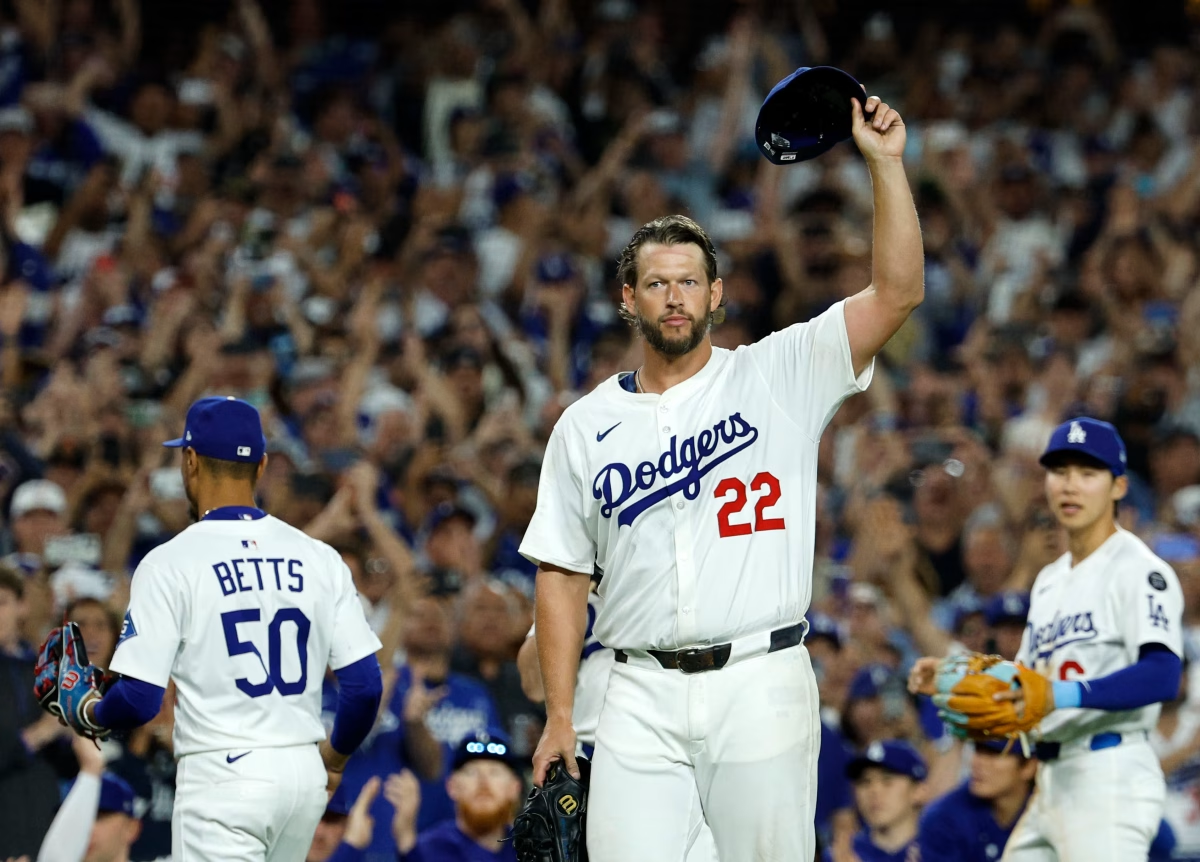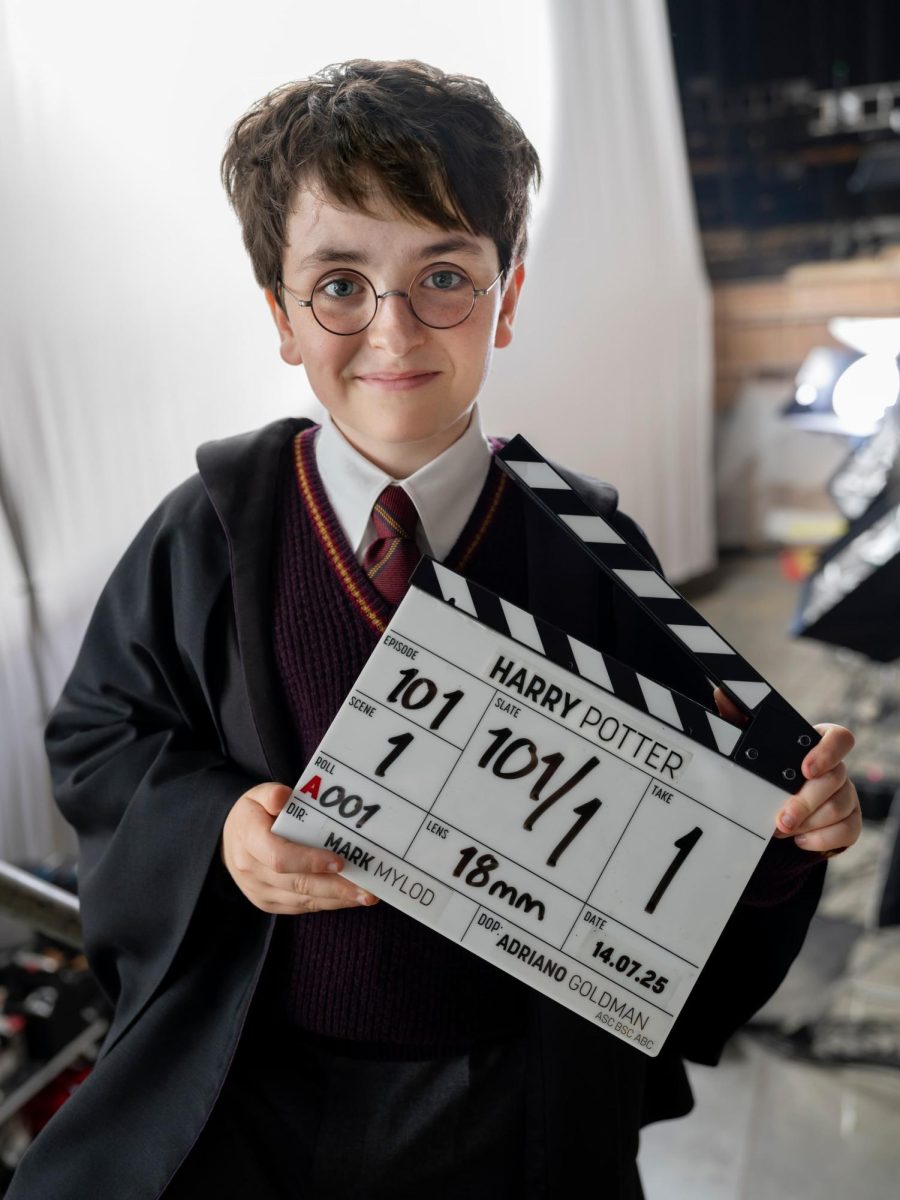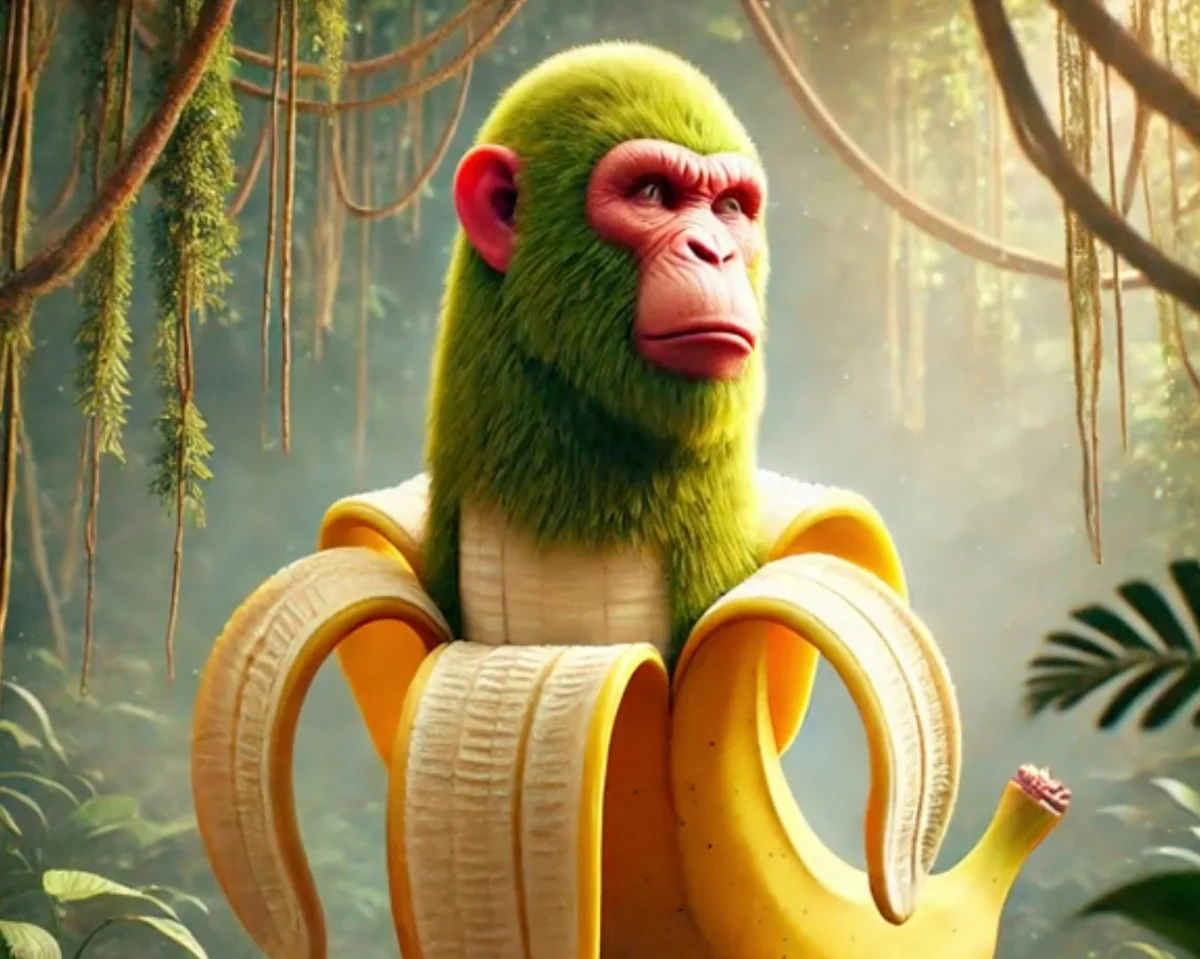Kentaro Miura-1 year death anniversary-Berserk cast analysis
May 27, 2022
Kentaro Miura, dead on May 6th of 2021. It was truly unexpected for the fans of his manga, Berserk. Their beloved author had died.
His death was extremely influential to those who loved seinen, a magazine company that serializes manga. His work is commonly referred to as one of the best manga ever. Lots of people paid tributes to him in many different ways. I will be paying tribute by making an analysis of some of the characters he made. Keep in mind that although this article itself will be lengthy the analysis of each of these characters will be a bit short as I am doing it on more than one character, also this should be self-explanatory but spoiler warning.
The first analysis will be on no other than the main character, Guts.
To start off, theme topics. An important theme topic of Guts is existentialism, a philosophical theory or approach which emphasizes the existence of the individual person as a free and responsible agent determining their own development through acts of the will. Guts represent this because of his will to live throughout the entire series. He should have died in the eclipse yet he made it out because he wanted to and with the help of the skull knight. Sadly, he is constantly being hunted down because he attracts apostles due to a mark he was given. He doesn’t allow anyone the act at a higher authority than himself. The only person who can control him is himself.
Another example of his prevailing will is the beast of darkness. The beast of darkness was something that tried to force Guts into his vulgar unconscious desires such as trying to r**e Casca. Guts to no avail didn’t fall for it as he wants to be his own person and not become another Griffith.
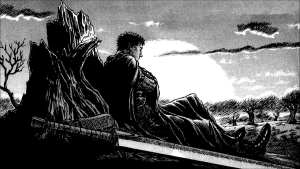
Next, is the symbolism of his sword. Gut’s mental state is shown throughout his sword. The meaning of a functional sword is to battle. When gut’s sword had no cracks, he would fight and fight non-stop. However, when it did get a crack, he wanted to repair it as it is his life. He is explicitly shown to always be near how sword and to almost never be without it. The blacksmith did eventually fix his sword but it did not change the sins committed with it. Just as the sword changed, so did he. his goal went from killing to wanting to spend his life with Casca. Also, guts once said he was just mindlessly swinging his sword. Showing that he had no goal but now he does.
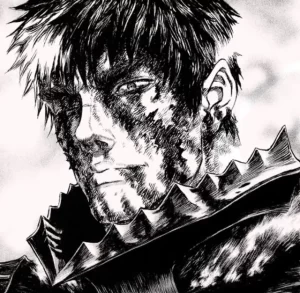
This panel of Guts shows “the struggler” at his best. His berserk armor is a physical manifestation of his hatred. Once he took it off because he could protect Casca. his hair turning white is showing the abandonment of his own humanity. His armor is similar to that of teeth which can be interpreted that his armor eating away at his humanity.

One of the most obvious analyses of Guts and his dynamics would be sun and moon between him and Griffith. Guts being the moon and Griffith being the sun. They are constantly shown to represent this through their shading. Guts are practically always shaded with black while Griffith shows white. Guts are shrouded in the darkness and have always been since the moment he was born.
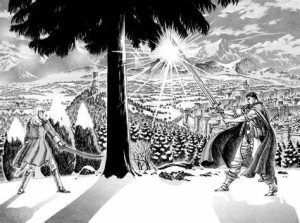
As seen in the panel, Griffith is atop Gut’s sword. This is a representation of Griffiths’s pride over Guts and even his “aura” emanates throughout the clouds, splitting them. In the duel, you can see that Gut’s sword hovers over the sun as if it’s piercing it. This foreshadowed Griffiths’s defeat. It also showed how Griffiths’s pride became wounded. We know this because it also foreshadowed the eclipse in which darkness covers the sun, showing that Griffith is mentally unstable and that Guts is the way of both his pride and goal.
Their dynamic only becomes better once you look at the clash of ideologies they have. Guts believed he is of free will while Griffith believed he to be someone who could impose his will onto others. This is the symbolism of yin and yang. Guts portray yang at first and Griffith portrays yin at first. They had a perfect blend of light and darkness and even when Guts went into the light(yin), Griffith went into the dark(yang) once again showing their perfect balance. This is only supported more when Griffith says “For me to call a man my friend, he must be my equal in every aspect.”
Before Guts became a man of free will, he obeyed Griffith. In a specific panel, he is walking with a light showering upon him and his shadow behind him. This shows how he is blinded by Griffith’s goal and his goal is not visible as it is behind him.
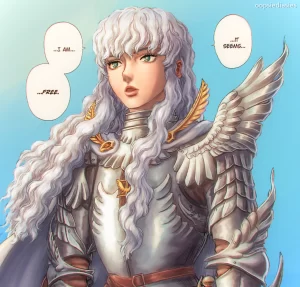
Griffith’s acknowledgment of being free from fate. Griffith has always thought of humans as lesser than him. Like he was a God above all(before he actually became a literal part of God’s hand). Only when he had reincarnated did he truly feel free above humans. Free from his fate. Being a demon meant he was no longer bound by the weaknesses of humanity.
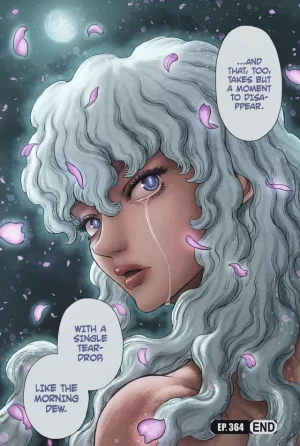
Sadly, there is more behind the panel. Instead of this representing true freedom, it’s quite the opposite. Griffith only believes he is free because he is able to achieve his true goal. Griffith looks ahead while saying he’s free which is showing how he yearns for the future. Keep in mind that he is visually characterized by a hawk. A bird that can soar high without being bound to anything and is known as one of the strongest predator birds. In the final panel of Berserk, we see him looking behind himself, showing how he now looks to the past. He now understood that his true freedom was with Guts, hence the black hawk in which Guts represents darkness for a main chunk of the series.
When Griffith claims to be free you can see that he is wearing a full suit of armor and in the last one, he is naked. Griffith in the I am free panel is also showing no emotions while in the other he has a single tear. This shows how his suit of armor protected his emotions and in the final panel, in which he is naked, he lets go of his emotions. Guts is his light as he is Guts. They are fated with each other.
Griffith’s symbolism of christ. As said before, he was looked at as light. The perfect being. The thing is, neither Jesus or Griffith is perfect. Christ wept showing his human emotions and when Griffith has but a single tear, it shows that even he has emotions. If you have read Berserk then you should have heard many different dialogues said by Griffith that is similar to Jesus.
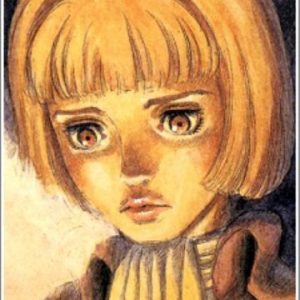
Farnese is easily one of my favorite characters in Berserk. Farnese shows both idealism and escapism. Her idealism is shown by her cruel upbringing. She by no means had a “happy” childhood. When she threw the torch into the stake it showed the idealistic views of the berserk world. She was able to spread both light and darkness and be okay because she followed her religion and was considered to always be in the right as she didn’t understand emotions.
Her escapism is due to her idealistic views. She deluded herself into not being scared by saying she’s right because she follows a religion.
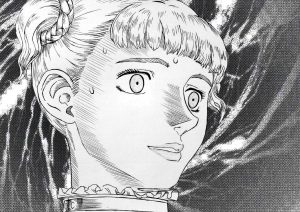
Farnese came to admire Guts. She, just like all the other religious followers in Berserk, believes that nobody can defy the Gods. Guts defied everything they believed in. Her admiration for him is explicitly shown when she looks into her reflection when asked by her mother if there is a man she’s fond of. Her reflection showed Guts. This showed how she developed into someone who thought she was worthy of living. She never thought true happiness was possible for her yet a man who has gone through pure tragedy could be happy.
This concludes the analysis of the characters. The analysis is quite short but I hope I was able to enlighten you on some things you didn’t already know and maybe you will do an in-depth analysis yourself.
R.I.P. Kentaro Miura

